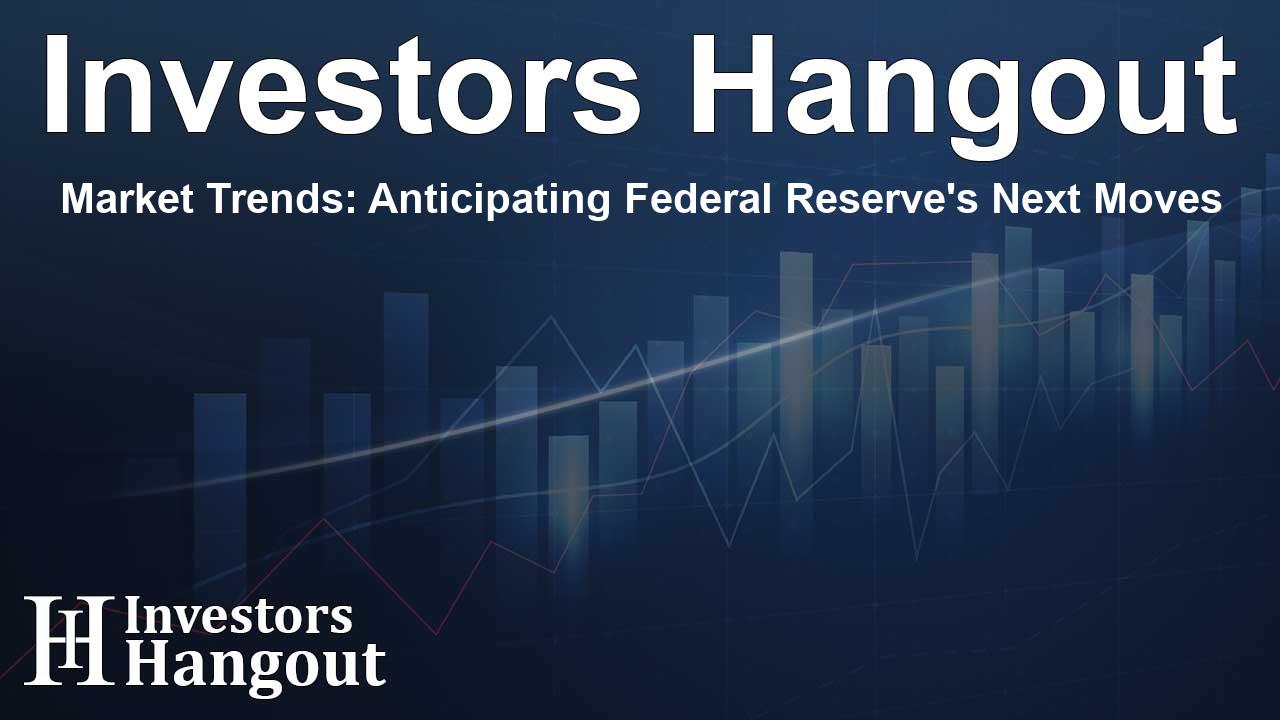Market Trends: Anticipating Federal Reserve's Next Moves

Understanding Market Expectations for Monetary Policy
In the financial landscape, expectations around monetary policy are shifting, suggesting a potential easing cycle from the Federal Reserve. Although the central bank is not anticipated to alter interest rates in the immediate future, recent indicators reveal a nuanced change in market confidence regarding this stance.
As it stands, the latest projections indicate a 79% chance of the Fed maintaining rates at the next FOMC meeting, down from nearly 100% just weeks ago. In contrast, market predictions for a September rate cut are climbing sharply, currently sitting at around 90% probability.
Current Trends in Treasury Yields
A noticeable change in the financial markets can be observed in the behavior of the policy-sensitive US 2-year Treasury yield. This key indicator has recorded seven consecutive days of decline, reaching 3.70%, marking its lowest point in almost two months. This widening gap between the 2-year yield and the higher Fed funds rate suggests an evolving sentiment, with traders increasingly betting on forthcoming rate cuts.
Analysts have utilized simple models comparing inflation trends and unemployment rates against the median effective Fed funds target rate. Their outcomes continue to advocate for a slightly tighter monetary policy, implying that the justification for a potential rate cut is becoming more compelling.
Chairman Powell's Insights on Monetary Policy
This week, Federal Reserve Chairman Jerome Powell reiterated the bank's stance on keeping rates steady for the time being. He expressed caution relating to inflation risks presented by tariffs, stating that, "Policy changes continue to evolve, and their effects on the economy remain uncertain." These remarks were part of his testimony during a congressional meeting.
“For the time being, we are well positioned to wait to learn more about the likely course of the economy before considering any adjustments to our policy stance.”
Market Reaction to Employment Data
Another layer of complexity is added to this narrative by indications of a weakening job market. Recent data on initial and continuing jobless claims provides insights into employment trends. Initial claims exhibited a reduction for the second consecutive week following a spike to unprecedented levels not seen since October. However, continuing claims show a grim picture, escalating to a peak not recorded in three and a half years.
“The data are consistent with softening of labor market conditions, particularly on the hiring side of the labor market equation,” commented Nancy Vanden Houten, a lead economist at Oxford Economics. “For now, we don’t think the labor market is weak enough to prompt the Fed to cut rates before December, but the risk is increasing that once the Fed starts to lower rates, it will have some catching up to do.”
The Political Landscape's Influence on Federal Reserve Policy
In the broader political context, there is notable pressure on the Federal Reserve to adjust interest rates. President Trump has been vocal about his desire for rate cuts and may even consider appointing a successor to Powell ahead of schedule, potentially influencing the future monetary policy direction.
“This is a terrible idea, sure to annoy and confuse financial markets if there are two Fed Chairs,” stated Greg Valliere, the chief US policy strategist at AGF Investments. Kathryn Judge, a Columbia Law School Professor who specializes in financial markets and central banking, noted: “It all depends on just how loyal this person is expected to be to Trump. But we don’t know what the ramifications would be or what they’d be willing to do, because this is unprecedented.”
Looking Ahead: Market Predictions
As the market continues to adjust to evolving economic signals, the conversations around potential rate cuts and their timing grow increasingly relevant. Observers are acutely aware that these discussions will continue to shape investment strategies and economic forecasts moving forward.
Frequently Asked Questions
What is the current probability of the Federal Reserve cutting rates?
Currently, the market estimates a 90% chance of a rate cut in September among evolving monetary policy expectations.
Why are Treasury yields declining?
The US 2-year Treasury yield has seen a decline due to market sentiment leaning towards anticipation of rate cuts by the Federal Reserve.
What did Chairman Powell say about inflation risks?
Powell referenced the uncertainty around inflation risks from tariffs and emphasized the need for careful consideration before making policy changes.
How does the job market affect Federal Reserve decisions?
Data indicating a weakening labor market could heighten pressure on the Fed to consider rate cuts earlier than projected.
What are the potential political influences on the Fed?
Political pressures, particularly from President Trump regarding interest rates, could have significant implications for future Federal Reserve policies.
About The Author
Contact Olivia Taylor privately here. Or send an email with ATTN: Olivia Taylor as the subject to contact@investorshangout.com.
About Investors Hangout
Investors Hangout is a leading online stock forum for financial discussion and learning, offering a wide range of free tools and resources. It draws in traders of all levels, who exchange market knowledge, investigate trading tactics, and keep an eye on industry developments in real time. Featuring financial articles, stock message boards, quotes, charts, company profiles, and live news updates. Through cooperative learning and a wealth of informational resources, it helps users from novices creating their first portfolios to experts honing their techniques. Join Investors Hangout today: https://investorshangout.com/
The content of this article is based on factual, publicly available information and does not represent legal, financial, or investment advice. Investors Hangout does not offer financial advice, and the author is not a licensed financial advisor. Consult a qualified advisor before making any financial or investment decisions based on this article. This article should not be considered advice to purchase, sell, or hold any securities or other investments. If any of the material provided here is inaccurate, please contact us for corrections.
